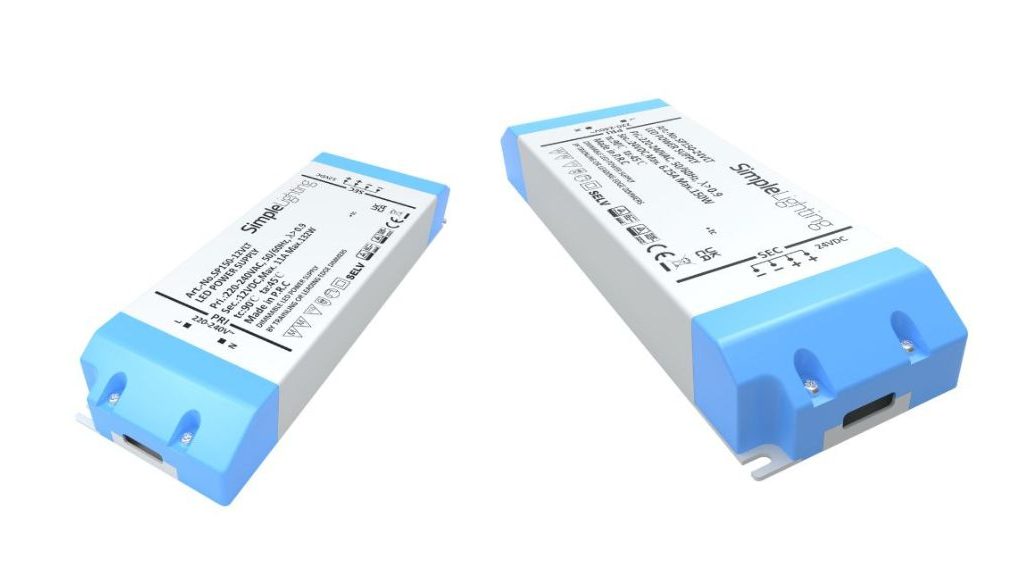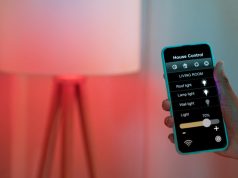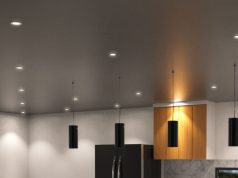LED drivers regulate the power distributed to the LED fixture. They convert alternating current from the main power supply to a lower voltage. In terms of dimming, there are two types of drivers: non-dimmable and dimmable drivers. Whenever I use dimmable lighting fixtures, I ensure that I pair them with a dimmable LED driver because they allow the fitting to dim smoothly and properly.
Aside from that, a dimmable LED driver can help extend the lifespan of a dimmable LED tape light or dimmable under cabinet light as it decreases the voltage an LED light requires to power up.
When installing a dimmable driver, you must follow certain precautions. Different models have specific guidelines, so you must read them before proceeding. However, to give you a general overview, here is what you need to expect that you’ll do:
- Review the specification of the LED driver (it must be compatible with the LED lights)
- Switch off the primary power supply
- Identify the power source’s positive and negative wires
- Wire the positive terminal of the driver to the positive terminal of the LED fixture’s input
- Connect the negative terminal of the driver’s output to the negative terminal of the LED’s input
- (Driver to the power supply) Link the positive terminal of the driver’s input to the positive pole of the power supply
- Wire the negative terminal of the LED driver’s input to the neutral pole of the power supply
Understanding Dimmable LED Drivers
What exactly does an LED driver do? Is it necessary for your installation? Will it affect the performance of your lights? When I was a newbie, I also asked those questions. Here’s what I learned throughout my experience.
Some LED lights cannot be connected directly to the main power supply because they have a lower voltage. An LED driver, be it dimmable or non-dimmable, helps regulate the voltage and current supplied to the low-voltage LEDs, guaranteeing that they operate within their safe operating boundaries.

As for dimmable drivers, they allow users to customise the brightness level of the fitting to suit specific preferences and requirements. They are suitable for task and accent lighting, providing users with more diversity to cater to their needs.
When choosing a dimmable driver to pair with your low-voltage lights, it’s necessary to check compatibility. When you are unsure, the best advice I can give you is to ask the supplier, manufacturer, or store personnel!
Wiring a Dimmable Driver
Disclaimer: even if this article provides a guide to wiring an LED driver, it’s still critical to follow the manufacturer’s instructions. That way, you will have a successful and high-quality installation. Better yet, call a professional to do it for you to ensure everything is in place and safe!
Nevertheless, here’s what you must do when installing a dimmable driver!
Step-by-step
- Assess the specifications of the LED driver and guarantee that it’s compatible with the LED lights.
- Determine the positive and negative wires of the power source and switch off the circuit breaker.
- Wire the positive terminal of the driver to the positive terminal of the LED fixture’s input. Then, connect the negative terminal of the driver’s output to the negative terminal of the LED’s input.
- To link the driver to the power supply, connect the positive terminal of the driver’s input to the positive pole of the power supply. Then, wire the negative terminal of the LED driver’s input to the neutral pole of the power supply.
Things to Consider When Purchasing a Dimmable LED Driver
Many LED drivers are available, so it’ll get confusing once you start considering your options. To avoid getting lost in all the variations, below are a few things I check when purchasing an LED driver!
- Lifespan – Look for an LED driver that can last for 30,000 hours or longer, so you don’t have to keep installing replacements often.
- Power —Ensure that the driver’s power exceeds or is equal to the total wattage of the LED lights you’ll connect.
- Dimming Range —Some dimmers can be set to 0% while others stay at 10% dimmed. Review the driver’s dimming range if you want the option to go dark.
- IP Rating —This aspect is critical because it indicates the driver’s waterproofing level. If you plan to install it outdoors, it should be IP65-rated and up. If you’re mounting it indoors, away from water sources, an IP20-rated driver will do.
Conclusion
Wiring a dimmable LED driver is relatively easy. As you read in this article, it’s manageable if you prepare everything. You only need to ensure that all the components are compatible and observe safety precautions. Also, like I always say, whenever you are unsure, calling a professional is a better option because they know how to mount your lights correctly and safely.
If you are looking for premium-quality LED drivers, visit our website, Simple Lighting! We have a comprehensive selection of dimmable and non-dimmable varieties!














